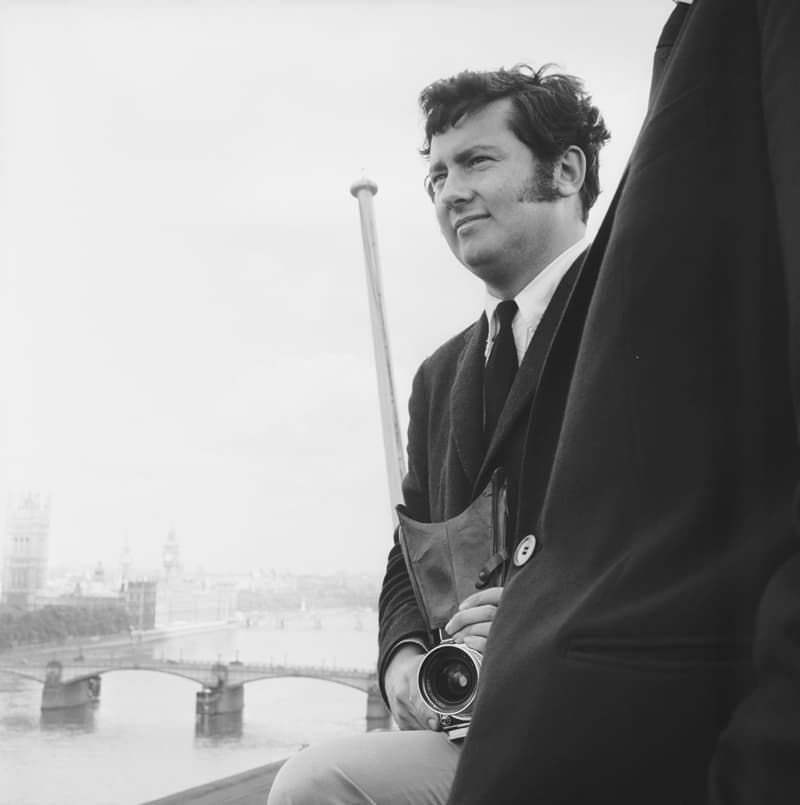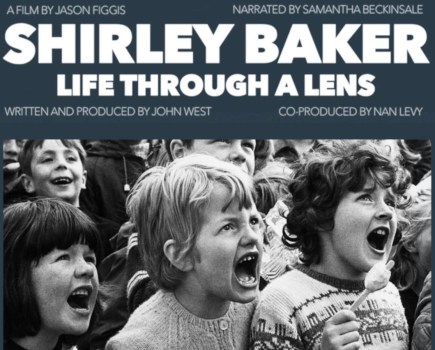Image: Terence Donovan during a photo shoot in London, 1963 © Terence Donovan Archive/Getty Images
Terence Donovan’s rise to prominence in the early 1960s, together with like-minded contemporaries David Bailey and Brian Duffy, signalled a fresh approach to fashion photography. It became less formal and studio-bound, and models who were previously depicted as remote and aloof were now more like the girl in the street.
Shooting fashion became cool and the photographers themselves became sought-after celebrities. The elder generation of fashion photographers looked on with a mixture of admiration and disapproval: Cecil Beaton described Donovan’s work as ‘strong and stark’, but said his models had ‘no innocence’ and was uneasy about the way he made them ‘look as if they were wearing soiled underwear’.
Duffy offered a different perspective. ‘Before us, fashion photographers were tall, thin and camp,’ he told The Sunday Times. ‘We’re different. We’re short, fat and heterosexual.’
Like Bailey and Duffy, Donovan was a working-class Londoner. He was born in Stepney in 1936 and his father was a long-distance lorry driver. He attended numerous schools for short periods and spent most of the years during the Second World War travelling around the UK in his father’s lorry. At the age of 11, following in his uncle’s footsteps in the printing business, he began a part-time apprenticeship in lithography.
Donovan studied block making at the London School of Photo-Engraving and Lithography, and at the age of 15 began working for block-making company Gee and Watson as a photographer’s assistant. Here he discovered that photography, rather than printing, was his true passion, and he went on to assist other photographers, including Michael Williams at Fleet Illustrated.
This work was interrupted in 1955 by two years’ national service in the Royal Army Ordnance Corps, and soon afterwards he went to work at the studio of leading fashion photographer John French. A year later, at the age of 22, Donovan set up his own studio in London’s Knightsbridge.
 Image: A male model poses on a rooftop at London’s Grove Road Power Station during a photo shoot for the magazine Man About Town, 1960© Terence Donovan Archive/Getty Images
Image: A male model poses on a rooftop at London’s Grove Road Power Station during a photo shoot for the magazine Man About Town, 1960© Terence Donovan Archive/Getty Images
The studio was a success and he was soon working regularly for advertising agencies and magazines. A fashion shoot for Man About Town in 1960 was typical of his work at this time. One of these images shows a model posing against a backdrop of a cloud of steam while standing on a rooftop at London’s Grove Road Power Station. It demonstrates Donovan’s ability to create images that not only showed the clothes to best effect, but were also original and visually arresting.
In these early years he also shot documentary photo essays for Man About Town, including one about a day in the life of a stripper in London’s West End. Although these shoots were successful, Donovan wasn’t naturally inclined to shoot documentary work. He mainly used the things he saw in everyday life as an inspiration for carefully arranged work with models.
In 1963, he did his first shoot for Vogue, beginning a lifelong association with the magazine, but during the 1960s and ’70s he also shot fashion and portraiture for a range of publications, including Nova, Elle, The Sunday Times Magazine and Harper’s Bazaar.
Donovan was noted for his technical mastery of the medium as well as his visual creativity. He had a relaxed but professional manner with his subjects, whether fashion models or royalty, and kept up a steady stream of banter while photographing.
‘Shoots were always a pleasure,’ US Vogue’s creative director and former model Grace Coddington says in the new book Terence Donovan: Fashion. ‘With Terry, one would spend one’s day laughing until one’s sides ached. But he always had such a great command of the situation, no fussing about, always so direct.’
Donovan made a feature film, the comedy spy thriller Yellow Dog, in 1973, which critics generally agreed was visually arresting but had a confusing plot. His talent was more suited to shooting television commercials, which formed the main part of his work in the 1980s.
He also directed a number of influential pop videos, most famously for Robert Palmer’s songs Addicted to Love and Simply Irresistible in the 1980s. Both were glossily lit and featured Palmer surrounded by numerous glamorous, mannequin-like models.
During the ’80s, Donovan was also popular as a celebrity and royal portrait photographer. He shot formal portraits of Princess Diana in three separate sittings, as well as the Duke and Duchess of York and Margaret Thatcher when she was Prime Minister.
Although always busy with work, Donovan found time to explore other forms of artistic expression. He was an enthusiastic abstract painter, holding a successful exhibition in London in 1990. He was also a Zen Buddhist and a black belt in judo, co-writing and providing images for a book on judo in 1985.
Donovan was appointed a Visiting Professor at Central St Martin’s School of Art in 1996 and the same year shot a major series of rock star portraits for GQ magazine. Yet later that year, Donovan’s life came to a tragically premature end when he committed suicide at the age of 60. The inquest that followed revealed he had been taking steroids to treat eczema, which had brought on severe depression.
Donovan left an archive of more than a million images, made during 40 years as a professional photographer. In his final interview, a few months before his death, he insisted that his career had been motivated by the sheer enjoyment of photography – the money and fame it had brought was of secondary importance.
‘What you’ve got to understand about Bailey and me is, we were fantastically hard-working,’ he said. ‘Bailey and I never wanted to be successful photographers. That wasn’t the plot. We weren’t ambitious, ever. We just wanted to do it.’
Books and websites
Books: Terence Donovan: Fashion, edited by Diana Donovan and David Hillman, with text by Robin Muir and foreword by Grace Coddington, is published by Art/Books, priced £60 hardback. Visit www.artbookspublishing.co.uk.
Websites: The Terence Donovan Archive website, www.terencedonovan.co.uk, includes a selection of his images plus biographical information. More Donovan images can be seen on www.chrisbeetlesfinephotographs.com.
Biography
1936: Born in Stepney, East London, on 14 September
1951: Became a photographer’s assistant at print firm Gee and Watson, then at photographers High White and Michael Williams
1955: Called up for two years’ national service in the Royal Army Ordnance Corps
1957-58: Joins studio of fashion photographer John French to assist Adrian Flowers and John Adrian
1959: Opened his first photographic studio in London’s Knightsbridge
1963: Receives his first commission to shoot for Vogue magazine
1964: First book published, Women Throoo The Eyes of Smudger Terence Donovan
1973: Directs the comedy spy thriller Yellow Dog
1980s: Directs TV commercials and pop videos, shoots advertising and fashion
1983: Publishes Glances, a collection of erotic images of women
1985: Publishes Fighting Judo, a book on judo techniques he also co-wrote with judo expert Katsuhiko Kashiwazaki
1986: Directs the pop video for Robert Palmer’s Addicted to Love
1996: Commissioned by GQ magazine to shoot a major series of rock portraits. Later that year, he dies on 22 November, aged 60







